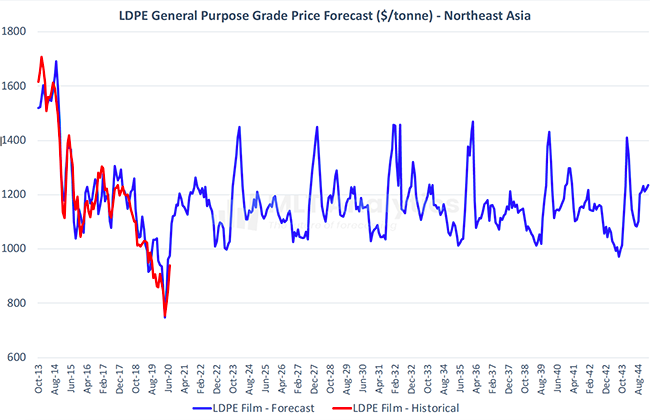Resin Price Forecaster Leverages AI, Machine Learning to Predict Trends
Startup MLT Analytics develops hypothetical feedstock price scenarios based on mega-trends and then applies machine learning and artificial intelligence (AI) to identify key resin pricing influencers and generate real-world forecasts.
September 27, 2021

Global resin prices have been volatile of late, primarily because of factors related to COVID-19. But from a historical perspective, volatility is the rule, not the exception. It is baked into pricing, fueled by various factors centered on feedstock and upstream commodity prices, according to MLT Analytics. So why is it that existing price forecasts tend to be relatively linear despite historical price instability? This question intrigued the founders of MLT Analytics, who wondered if there was some rational means of introducing volatility into resin price forecasting as observed in historical data.
The answer is two-fold, according to the company:
Develop a series of hypothetical feedstock price scenarios based on mega-trends, such as peak oil, vehicle electrification, natural gas-fired electricity proliferation, and regulatory developments.
Then, use machine learning and artificial intelligence to pinpoint the key influencers of resin pricing. Once identified, these influencers can be correlated with historical prices to generate real-world forecasts.
“Long-term oil and gas price forecasts, from the US Energy Information Administration, for example, lack volatility. They rise or fall, depending on the scenario, in a relatively linear fashion. What we are doing is introducing volatility into our forecasts based on past feedstock trends and assumptions of future market developments such as peak oil. This, in turn, introduces volatility into the resin price forecasts,” explained Stephen Moore, co-founder and CEO of MLT Analytics. “We analyze multiple feedstock and use machine learning to explore their correlations with resins by type and region or country where they are sold,” added Moore, who is also a longtime contributor to PlasticsToday.
|
Overlap of the red historical line and "back-cast" blue line indicates the validity of the modeling. |
While plastics are the starting point for MLT Analytics, pricing for any type of commodity, including non-plastic materials, can be theoretically forecast once historical prices are correlated with data for key influencers.
Once the forecasting model has been set up, the latest historical data is fed into the model as it becomes available, which serves to further refine the forecast. Further, “back-casting,” as indicated in the graphic by the portion of the blue line overlapping the red historical line, is a means of verifying the validity of the forecast. A close overlap of the historical and back-casted data is proof that the modeling is working from a statistical perspective.
“Unless the data you are feeding into the forecasting model makes sense from industry and economic perspectives, your forecast, unfortunately, will look like an unlikely outcome,” cautioned Moore. “That’s where the decades of industry expertise our team has accumulated becomes of ultimate importance.”
About the Author(s)
You May Also Like



